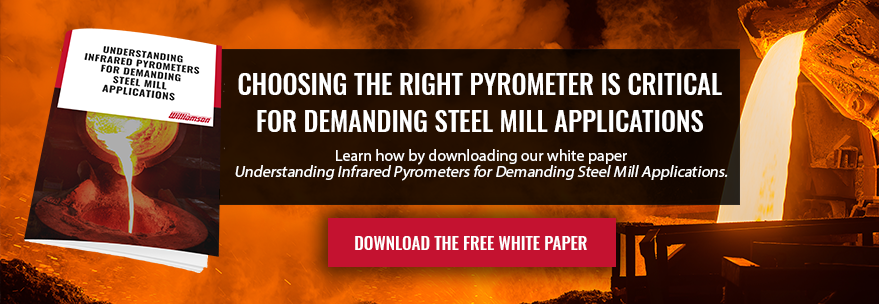
Steel coils can be manufactured in either the hot or cold rolling mill. Hot rolled coils are manufactured at temperatures typically above 1700°F, whereas cold rolled steel is essentially hot rolled steel that has been carefully rolled again around room temperature. Cold-rolled steel is typically harder and stronger than hot-rolled steel but it does require a bit more processing. Regardless, if your coil is hot or cold rolled it is important to monitor and carefully control the steel temperature at these critical steps in processing.
Producing consistent high-quality steel will benefit from implementing accurate instrumentation to monitor the critical points of the processes.
Simply having a repeatable process alone will not produce consistent coils. Close monitoring and control of process temperature at the critical processing points will be the ultimate factor in the final quality of your coils.
A couple of critical areas where temperature can be monitored are at the reheat furnace and the rolling stands & coiler, and lastly the cold mill for cold rolled steel.
Making sure the steel slab has been properly heated to the correct temperature is the very beginning of the process from slab to coil. Therefore it is critical that temperatures are monitored at the furnace entry and soaking zones to ensure the steel has reached a safe temperature before being rolled thinner and thinner. Different alloys of steel will require different soaking temperatures and soaking times meaning an accurate sensor is the only certain way to ensure optimal preheating of your slab.
 Temperature readings at the rolling stands provide important feedback for the reheat furnace, and also maintain product quality. An accurate temperature reading is essential to optimally adjust line speed and assure desired steel properties. Temperature consistency between the top and bottom of the rolled steel also prevents derailment. Steel temperature at the coiler has a significant impact on product properties. Coiler temperature is critical to confirm desired mechanical properties. By accurately monitoring temperature, you can also prevent over-cooling and conserve energy costs.
Temperature readings at the rolling stands provide important feedback for the reheat furnace, and also maintain product quality. An accurate temperature reading is essential to optimally adjust line speed and assure desired steel properties. Temperature consistency between the top and bottom of the rolled steel also prevents derailment. Steel temperature at the coiler has a significant impact on product properties. Coiler temperature is critical to confirm desired mechanical properties. By accurately monitoring temperature, you can also prevent over-cooling and conserve energy costs.
Overheating steel as it is rolled in the cold mill affects the mechanical and dimensional properties of the steel and causes surface blemishes. Pyrometers should be used to make sure the steel does not get too hot before it moves on to the finishing mill where it can be annealed, galvanized and coated to add extra value. These are just a few of the critical repeatable processes that should be monitored and controlled by temperature. To learn more please download our complete set of application notes for the Hot Rolling Mill and Finishing Mill.

